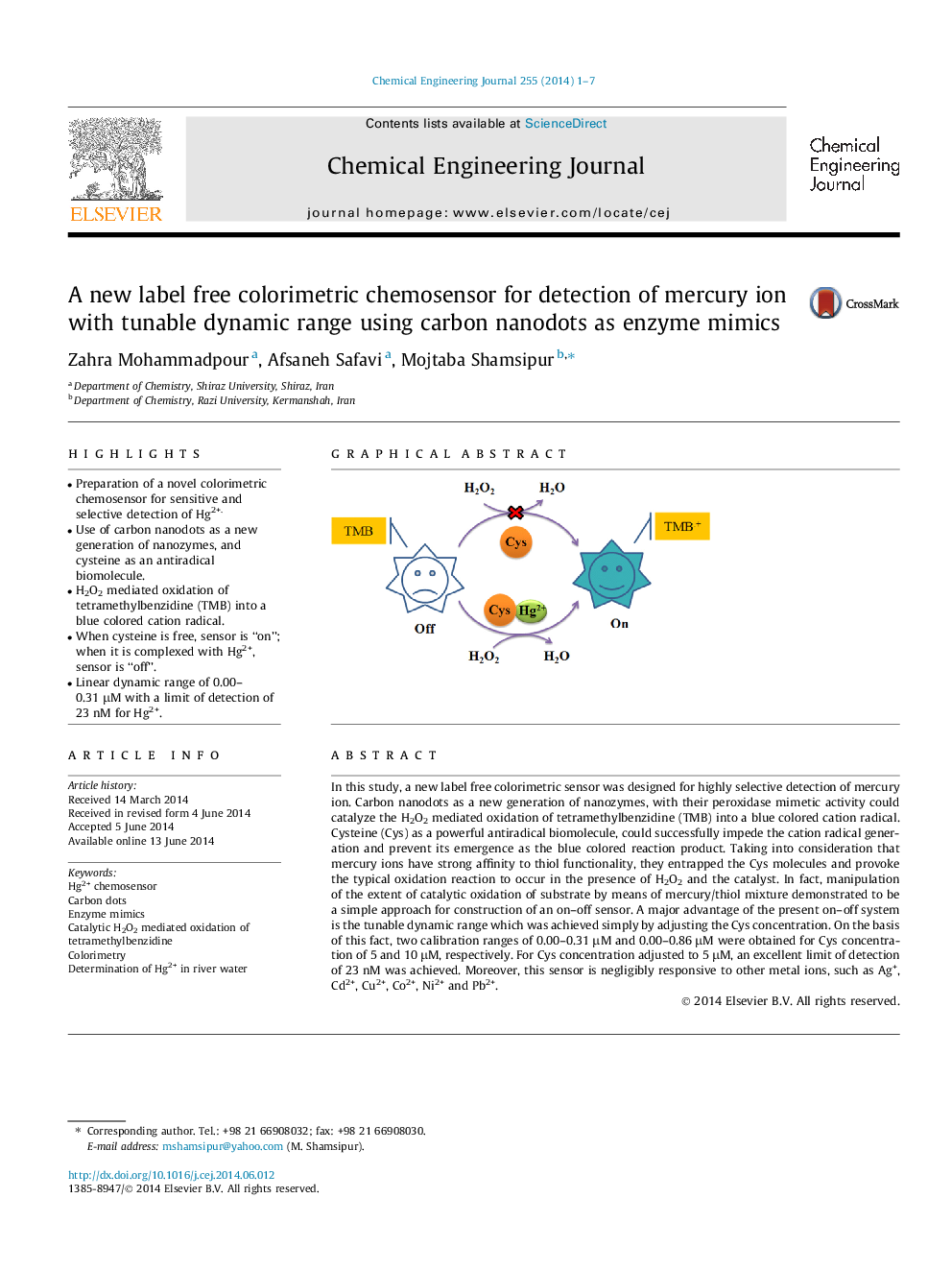| کد مقاله | کد نشریه | سال انتشار | مقاله انگلیسی | نسخه تمام متن |
|---|---|---|---|---|
| 147040 | 456385 | 2014 | 7 صفحه PDF | دانلود رایگان |
• Preparation of a novel colorimetric chemosensor for sensitive and selective detection of Hg2+.
• Use of carbon nanodots as a new generation of nanozymes, and cysteine as an antiradical biomolecule.
• H2O2 mediated oxidation of tetramethylbenzidine (TMB) into a blue colored cation radical.
• When cysteine is free, sensor is “on”; when it is complexed with Hg2+, sensor is “off”.
• Linear dynamic range of 0.00–0.31 μM with a limit of detection of 23 nM for Hg2+.
In this study, a new label free colorimetric sensor was designed for highly selective detection of mercury ion. Carbon nanodots as a new generation of nanozymes, with their peroxidase mimetic activity could catalyze the H2O2 mediated oxidation of tetramethylbenzidine (TMB) into a blue colored cation radical. Cysteine (Cys) as a powerful antiradical biomolecule, could successfully impede the cation radical generation and prevent its emergence as the blue colored reaction product. Taking into consideration that mercury ions have strong affinity to thiol functionality, they entrapped the Cys molecules and provoke the typical oxidation reaction to occur in the presence of H2O2 and the catalyst. In fact, manipulation of the extent of catalytic oxidation of substrate by means of mercury/thiol mixture demonstrated to be a simple approach for construction of an on–off sensor. A major advantage of the present on–off system is the tunable dynamic range which was achieved simply by adjusting the Cys concentration. On the basis of this fact, two calibration ranges of 0.00–0.31 μM and 0.00–0.86 μM were obtained for Cys concentration of 5 and 10 μM, respectively. For Cys concentration adjusted to 5 μM, an excellent limit of detection of 23 nM was achieved. Moreover, this sensor is negligibly responsive to other metal ions, such as Ag+, Cd2+, Cu2+, Co2+, Ni2+ and Pb2+.
Figure optionsDownload as PowerPoint slide
Journal: Chemical Engineering Journal - Volume 255, 1 November 2014, Pages 1–7
